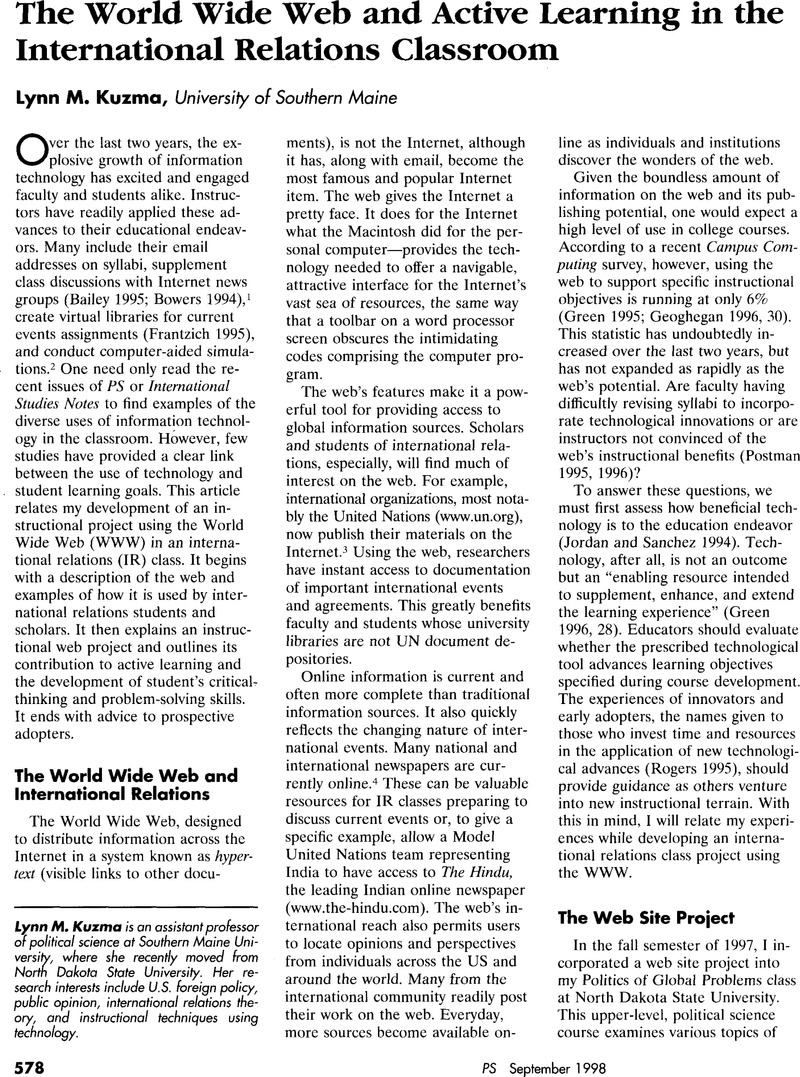Crossref Citations
This article has been cited by the following publications. This list is generated based on data provided by Crossref.
Mayer, Kenneth R.
and
Coleman, John J.
2000.
Student Attitudes toward Instructional Technology in the Large Introductory U.S. Government Course.
PS: Political Science & Politics,
Vol. 33,
Issue. 3,
p.
597.
Hamann, Kerstin
and
Wilson, Bruce M.
2003.
Beyond Search Engines: Enhancing Active Learning Using the Internet.
Politics & Policy,
Vol. 31,
Issue. 3,
p.
533.
POLLOCK, PHILIP H.
HAMANN, KERSTIN
and
WILSON, BRUCE M.
2005.
Teaching and Learning Online: Assessing the Effect of Gender Context on Active Learning.
Journal of Political Science Education,
Vol. 1,
Issue. 1,
p.
1.
Lay, J. Celeste
and
Smarick, Kathleen J.
2006.
Simulating a Senate Office: The Impact on Student Knowledge and Attitudes.
Journal of Political Science Education,
Vol. 2,
Issue. 2,
p.
131.
Williams, Michelle Hale
Goodson, Kymberly Anne
and
Howard, W. Gary
2006.
Weighing the Research Paper Option: The Difference that Information Literacy Skills Can Make.
PS: Political Science & Politics,
Vol. 39,
Issue. 03,
p.
513.
Dengler, Mary
2008.
Classroom Active Learning Complemented by an Online Discussion Forum to Teach Sustainability.
Journal of Geography in Higher Education,
Vol. 32,
Issue. 3,
p.
481.



